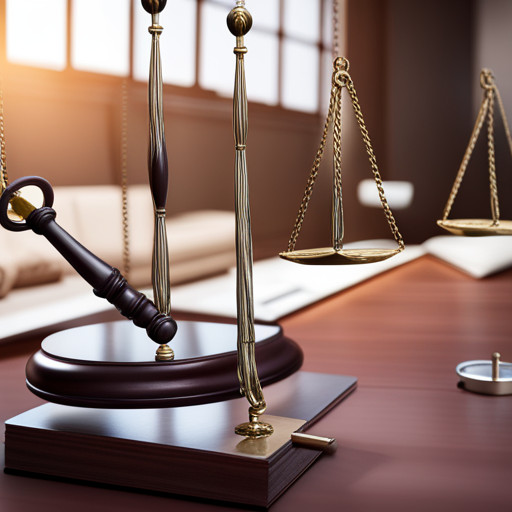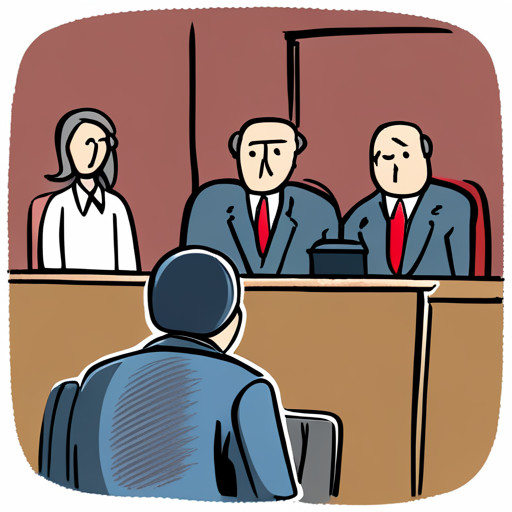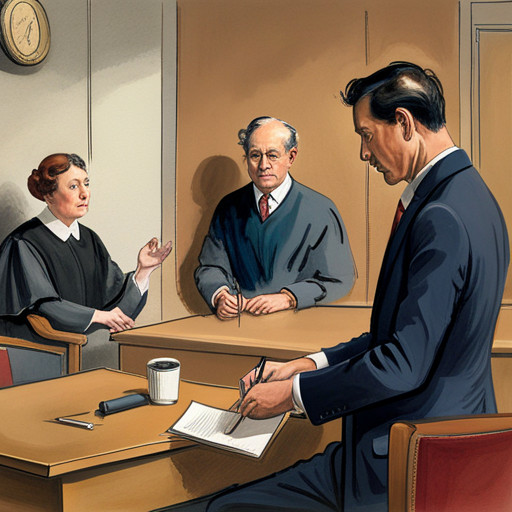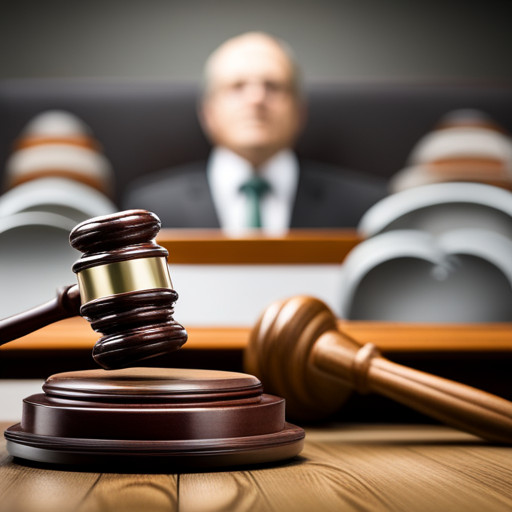Can You Sue for Injury in Small Claims Court Is Pain and Suffering Included
Navigating the labyrinth of small claims court can be challenging, particularly when dealing with personal injury cases. This article explores the role of small claims courts in injury compensation, the types of damages recoverable, and the potential limits imposed.

The intricacies of gathering and presenting evidence, as well as understanding monetary constraints, will also be dissected. This comprehensive overview provides crucial insights into the workings of small claims court in the context of personal injury claims.
Key Takeaways
- Small claims courts are a simple and affordable option for pursuing injury compensation without an attorney.
- Small claims courts limit the amount you can recover and may not allow pain and suffering or emotional distress claims.
- Most states' small claims courts allow injury claims but prohibit non-monetary losses.
- Small claims courts have limits on the amount of money you can demand, and if your claim value exceeds the limit, you may need to consider suing in a higher court.
Understanding the Role of Small Claims Court

Understanding the role of Small Claims Court reveals it as a simplified, cost-effective option for pursuing compensation for injuries. However, it typically excludes non-economic damages such as pain and suffering and imposes a limit on the amount one can recover.
The importance of preparation cannot be overstated when it comes to navigating the legal process of Small Claims Court. It requires a thorough understanding of the court's procedures and limitations.
It is also critical to acknowledge the economic constraints of Small Claims Court. The maximum recoverable amount is set by law, which means there is a limit to how much one can receive in compensation.
Despite these limitations, Small Claims Court remains a viable option for individuals seeking a swift, less complex route to compensation. However, it is important to ensure that the potential recovery amount aligns with the court's designated ceiling.
Types of Compensation in Small Claims Court

Types of compensation that can be pursued in these judicial settings primarily include economic damages, like medical expenses and lost wages, while non-economic losses, such as emotional distress, are typically not permissible. The limitations of economic damages, underpinned by the principles of these lower courts, are dictated by the specific jurisdiction's maximum monetary threshold. This often restricts the potential for seeking non-monetary damages.
The focus of small claims court is to provide a streamlined process for dispute resolution, emphasizing tangible, quantifiable losses. The potential for non-economic damage claims, such as those for pain and suffering, is curtailed, reinforcing the court's role as a forum for seeking redress for concrete financial burdens rather than more abstract and subjective hardships.
Restrictions on Claims in Small Claims Court

Restrictions placed on litigants within these low-level judicial forums include limiting the nature and extent of the claims that can be pursued, with certain jurisdictions disallowing the pursuit of non-economic damages such as emotional distress or punitive damages. This limits the scope of personal injury claims that can be handled effectively in small claims court.
A cap is typically placed on the monetary value of claims.
Personal injury claims are restricted, ruling out non-economic damages.
Certain types of claims, such as defamation or landlord/tenant disputes, can be precluded.
A limit is also imposed on the frequency with which a plaintiff can file claims.
Despite these restrictions, small claims courts remain a viable option for litigants seeking efficient resolution of disputes with lower monetary value.
Monetary Limits in Small Claims Court

Monetary limits imposed by such judicial forums can significantly influence the value and nature of disputes handled, with these restrictions varying across different jurisdictions. Understanding the jurisdiction of small claims court is fundamental as courts set caps on the amount that can be demanded. Should a claim exceed this limit, the plaintiff may have to consider other legal avenues.
With respect to the process of filing a claim in small claims court, it is crucial to ascertain the monetary ceiling of the court in the respective jurisdiction. If the claim value surpasses this limit, the plaintiff may still proceed but will be unable to receive more than the maximum permissible amount. Hence, thorough exploration of the process is recommended for claimants to avoid suboptimal compensation.
The Consequences of Exceeding Monetary Limits

Exceeding the established financial threshold in a legal dispute can result in a claimant receiving less than the full amount of their claim due to the specific monetary limits set by the jurisdiction. This is one of the notable consequences of exceeding monetary limits in a small claims court setting.
Monetary limits set by small claims courts often prevent claimants from receiving full compensation for their losses.
Exceeding these limits may necessitate the pursuit of a claim in a higher court, resulting in increased complexity and cost.
The inability to claim for non-economic damages such as pain and suffering is a significant disadvantage of small claims court.
Claimants who exceed the monetary limit may inadvertently limit their potential compensation, essentially leaving money on the table.
Limitations of Small Claims Court

Transitioning from the consequences of exceeding monetary limits in small claims court, the limitations of this legal avenue must be explored.
Although small claims court offers a cost-effective and simplified process for pursuing compensation, the consequences of limited compensation can be significant. These courts impose rigid caps on the recoverable amount, often restricting claims to purely economic damages and disallowing compensation for pain and suffering. As a result, claimants may not receive full redress for their injuries.
Additionally, the challenges in small claims court are numerous, ranging from the absence of legal representation to the burden of proving negligence. Therefore, while small claims court holds appeal for its accessibility and efficiency, its inherent limitations may potentially undermine the pursuit of complete justice for injury victims.
The Outcome of Winning in Small Claims Court

Victorious litigants in the aforementioned judicial forum can anticipate the procurement of a judgment against the opposing party, which may be financially compensated by the liable party's insurance provider or, in the absence of insurance, through enforced payment mechanisms such as wage garnishment.
The importance of preparation for court proceedings cannot be understated, as it can significantly impact the outcome of the judgment.
Strategies for negotiating settlements prior to court proceedings can potentially result in a more favorable outcome, saving time and resources.
Successful litigants may need to engage in follow-up actions to enforce the judgment if the defendant does not willingly comply.
Understanding the mechanisms for enforcing judgments, such as wage garnishment or lien placement, is crucial for successful plaintiffs.
These factors underscore the complexities of small claims court proceedings, necessitating a thorough understanding of the process.
Handling Uninsured Defendants in Small Claims Court

Handling defendants without insurance in a minor disputes tribunal necessitates enforcement of the judgment through mechanisms such as wage garnishment or lien placement. Strategies for negotiating settlements with uninsured defendants often involve leveraging the potential implications of these enforcement actions. Effective negotiation can potentially expedite the payment process and alleviate some of the challenges associated with collecting on a judgment.
Notably, alternatives to small claims court, like mediation or arbitration, may provide a more conducive environment for reaching an amicable settlement. However, it's crucial to remember that the efficacy of these strategies depends largely on the specific circumstances of each case and the willingness of the parties involved to reach a compromise.
Enforcing Judgments in Small Claims Court

Enforcement of judgments in minor disputes tribunals necessitates a comprehensive understanding of the legal avenues available, such as wage garnishment, lien placement, or formal requests for payment. It becomes crucial when handling uninsured defendants, who may fail to comply with the court's decision.
Wage Garnishment: An effective tool for enforcing judgments, where a portion of the defendant's income is withheld to satisfy the debt.
Lien Placement: A claim made on the defendant's property until the debt is paid.
Property Seizure: In certain cases, the defendant's assets may be seized and sold to pay off the debt.
Formal Request for Payment: A direct approach, requiring the defendant to fulfill the payment obligation.
These methods ensure that judgments are enforced effectively, compensating the plaintiff even in cases involving uninsured defendants.
Building Your Case for Injury Compensation

Constructing a compelling case for compensation in personal injury disputes requires a thorough understanding of negligence laws and an ability to effectively present relevant evidence. Building a strong argument necessitates proving the four elements of negligence: duty of care, breached duty, causation, and verifiable injuries.
Demonstrating these elements with concrete proof is key to establishing liability. It is crucial to gather substantial evidence such as medical reports, witness testimonies, and other relevant documents. A clear, organized presentation of these evidences in court is vital for the successful execution of strategies for winning.
Moreover, understanding the specific laws and limitations of small claims court is also essential in formulating a persuasive argument for injury compensation.
Proving Negligence in Your Case

Establishing negligence in personal injury litigation necessitates a comprehensive evaluation of the four elements: duty of care, breach of duty, causation, and verifiable injuries. Proving negligence is a crucial aspect of any claim for personal injury in small claims court.
Gathering evidence is of paramount importance. This may include witness testimonies, relevant documents, or any other material that can substantiate the claim.
The duty of care must be established, demonstrating that the defendant had a responsibility to ensure the plaintiff's safety.
A breach of this duty must be proven, showing that the defendant failed in their responsibility.
It must be shown that this breach directly resulted in the plaintiff's injuries.
This systematic approach ensures a comprehensive and persuasive argument for negligence.
Gathering Evidence for Your Case

Compiling comprehensive evidence is a critical step in preparing for litigation. This process, often referred to as discovery, may involve gathering witness testimonies, relevant documents, or any other material that can substantiate the claim.
Witness testimonies play a crucial role in corroborating the plaintiff's account of the event or refuting the defendant's narrative. These testimonies can provide valuable support and credibility to the plaintiff's case.
Collecting relevant documents is another important aspect of evidence gathering. Medical records, incident reports, or correspondence can be crucial in establishing a chronological timeline of events, substantiating claims of injury or loss, and demonstrating the defendant's liability.
In addition to testimonies and documents, photographs or video footage can also be invaluable in visually demonstrating the circumstances surrounding the incident. These visual aids can enhance the persuasiveness and credibility of the plaintiff's case in court.
Overall, meticulous evidence gathering is essential in building a strong case and increasing the chances of success in litigation.
Organizing Your Court Presentation

Systematic organization and presentation of the collected evidence in a coherent and persuasive manner forms a crucial part of the litigation process in small claims court. This aids in building a strong argument.
Effective arrangement of evidence chronologically or by relevance can enhance the comprehensibility of the argument.
Utilization of visuals, such as charts or diagrams, can assist in illustrating complex matters effectively.
A clear delineation between primary and secondary evidence can strengthen the credibility of the argument.
Proper citation and referencing of the evidence can prevent allegations of plagiarism and boost the integrity of the argument.
In essence, organizing evidence effectively is paramount to presenting a compelling case in small claims court.
Presenting Your Case Effectively in Court

Efficient presentation of a case in the courtroom necessitates a comprehensive understanding of the pertinent legal principles and an ability to articulate the arguments and evidence persuasively. Overcoming challenges in court is pivotal for a favorable outcome.
The process commences with gathering evidence effectively which underpins the claim. This could encompass medical reports, eyewitness testimonies, or photographic evidence. Well-structured and detailed presentation of this evidence can significantly augment the credibility of the claim.
Furthermore, understanding and aptly applying legal jargon enhances the effectiveness of the argument, thereby increasing the chances of success. It is essential to maintain a composed demeanor and articulate arguments logically and persuasively.
Emphasizing the impact of the incident on the claimant's life can also prove compelling.
Overcoming Challenges in Small Claims Court

Navigating from the process of case presentation, the focus shifts towards overcoming challenges in small claims court. Given its simplified procedures and lower costs, the small claims court appears to be an attractive option. However, inherent limitations exist that may pose as significant challenges for claimants.
* The monetary cap on claims often restricts compensation, potentially leading to under-compensation of the claimants.
* The prohibition of non-economic damages in most states eliminates the possibility of compensation for pain and suffering.
* The lack of legal representation can overwhelm individuals, negatively affecting their case presentation.
* The enforcement of judgments can be a daunting task, especially if the defendant lacks insurance.
Therefore, while small claims court provides an accessible platform for dispute resolution, understanding and addressing these challenges is indispensable for a successful claim.
Frequently Asked Questions
Can a Small Claims Court Case Be Appealed if the Outcome Is Not in My Favor?
The appeal process in small claims court varies by jurisdiction. Generally, however, an unfavorable decision can be appealed on certain grounds. These grounds typically include procedural errors committed during the original hearing, or if new evidence has emerged that was not available at the time of the initial trial.
It is important to note that dissatisfaction with the outcome is not usually considered a valid ground for appeal.
How Long Does a Typical Small Claims Court Case Take From Filing to Judgment?
The duration of a small claims court case, from filing to judgment issuance, varies significantly based on numerous factors. These include the court's schedule, complexity of the case, and the promptness of judgment execution. On average, it may take several weeks to months.
The filing process, entailing completion and submission of necessary paperwork, is typically swift. However, awaiting trial and judgment execution can prolong the duration, necessitating patience from involved parties.
Can I Sue for Injuries on Behalf of a Minor in Small Claims Court?
In the realm of small claims court, the rights of minors are upheld. However, the claim must typically be initiated by a parent or legal guardian on the minor's behalf.
The presentation of thorough injury documentation is critical to substantiate the claim. While some jurisdictions may allow for the inclusion of pain and suffering, it is generally more common for small claims courts to primarily address the recovery of documented economic damages.
What Happens if the Defendant in a Small Claims Court Case Refuses to Pay the Judgment?
In instances where a defendant refuses to honour a small claims court judgment, enforcement mechanisms are available to ensure compliance. These can include formal requests for payment, wage garnishment, or property liens.
Judgement collection, however, may prove complex and necessitate legal expertise. Despite the simplicity of small claims court, refusal to pay a judgement introduces complexities that underscore the importance of understanding the full scope of legal recourse available.
Can I Represent Myself in Small Claims Court or Should I Hire an Attorney?
Legal representation in small claims court is not mandatory. However, self-representation may present risks, including limited understanding of legal procedures and potential loss of the case due to inadequate presentation.
Engaging an attorney, while increasing legal expenses, could enhance the likelihood of a successful claim. Nonetheless, the cost-effectiveness of hiring an attorney should be weighed against the potential benefits, considering the monetary limit of small claims court.

This post has been generated by AI and was not reviewed by editors. This is Not legal advice. Please consult with an attorney.




